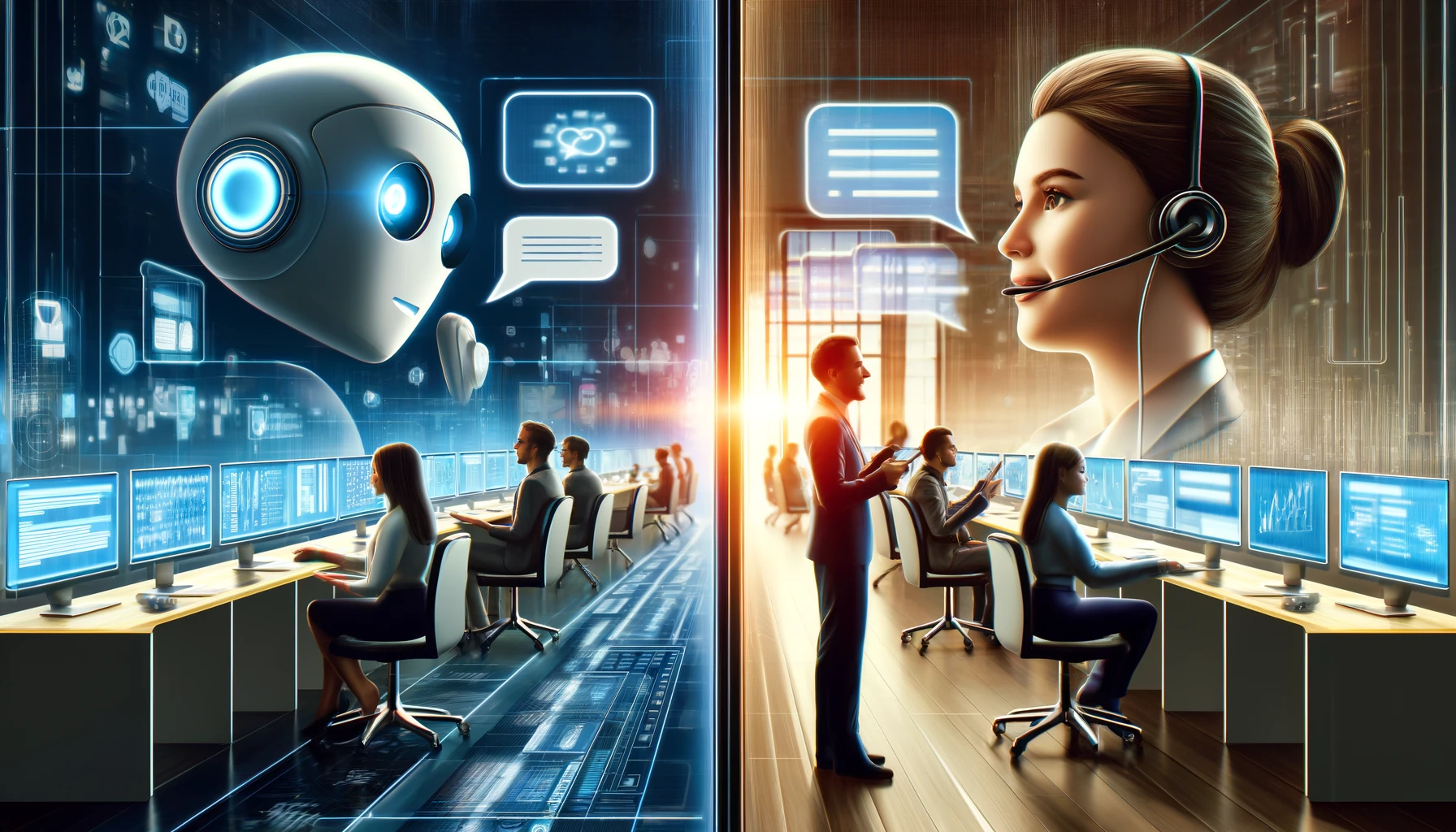- As businesses continue to innovate and seek more efficient ways to enhance customer experiences, the rise of AI-driven chatbots has been nothing short of transformative. Automated chatbots excel in handling repetitive tasks, delivering instant responses, and providing consistent service. However, the human touch remains irreplaceable in specific scenarios. By integrating live human agents into an AI-driven chatbot system, companies can enjoy the best of both worlds: efficiency and empathy. This article delves into the benefits of this hybrid approach, as well as the challenges of incorporating live human agents into an AI-led framework.
Benefits of Using Human Agents Alongside AI
-
- Enhanced Personalization:
While AI chatbots can offer quick solutions, they often lack the depth of understanding and emotional intelligence a human agent can provide. Human agents can personalize interactions based on even more subtle cues, such as the customer’s tone of voice and mood, ensuring a more tailored and heartfelt response.
-
- Handling Complex Queries:
AI chatbots are powerful tools for addressing common queries and routine tasks. However, they can fall short when confronted with complex or nuanced issues. Human agents can step in to manage these intricate scenarios, leveraging their expertise to provide accurate and satisfactory resolutions.
-
- Building Trust and Loyalty:
A human agent can empathize with customers, addressing their frustrations and concerns more effectively than a machine. A human agent can also more readily obtain trust and patience from a customer. Showing genuine care and understanding retains customers and encourages them to become advocates for your enterprise.
-
- Assistive Learning for AI:
Human agents can provide valuable insights and data to improve AI algorithms. By analyzing interactions handled by human agents, you can tune the AI to better manage similar situations in the future, enhancing the chatbot’s efficiency and accuracy over time.
-
- Providing a Safety Net:
Knowing a human agent is available in case of more significant issues provides customers with a sense of security. This added layer of support reassures users that their problems will be adequately addressed, even when the AI falls short.
Barriers to Including Human Agents
- Unfortunately but understandably, many online chatbots do not offer the ability for a customer to reach a human at their request. Some causes of this shortcoming are listed below.
-
- Cost Implications:
Integrating human agents into an AI-driven system comes with added costs. Salaries, training programs, and benefits increase operational expenses. Balancing the cost-efficiency of AI with the need for human intervention requires strategic planning and resource allocation.
-
- Operational Complexity:
Seamlessly blending AI and human agents can be technically complex. Ensuring smooth handovers between AI and humans, maintaining consistent communication, and avoiding customer frustration during transitions demand robust system integration and workflow optimization.
-
- Scalability Issues:
While AI can handle a virtually unlimited number of interactions simultaneously, human agents have limitations. During peak times, balancing the load to ensure that human agents are available when needed without overwhelming them or diluting the quality of service can be challenging.
-
- Training and Consistency:
Human agents require ongoing training to stay updated on product knowledge, company protocols, and navigating the AI-backed system. Ensuring consistency in service quality among human agents and between AI and humans takes considerable effort and resources.
-
- Data Privacy Concerns:
Handling sensitive customer information involves strict adherence to data privacy regulations. While AI systems can be programmed to secure data, human agents must be thoroughly trained to avoid unintentional breaches, ensuring that the integration does not compromise customer confidentiality.
Conclusion
- The confluence of AI-driven chatbots and human agents bridges the best of both worlds—offering automation’s efficiency with empathy and nuanced understanding of human interaction. By skillfully navigating the challenges associated with this integration, businesses can create an optimal customer experience that balances speed with personalization, ultimately driving loyalty and satisfaction.
- GPT-Trainer's no-code chatbot builder offers human escalation. Our powerful platform empowers you to create sophisticated AI-driven chatbots that handle common queries efficiently while ensuring seamless transitions to human agents for complex issues. Enhance customer satisfaction by offering instant, accurate responses combined with personalized human support whenever needed. Experience the ease of setup and the limitless potential for user engagement of our innovative solution today!

